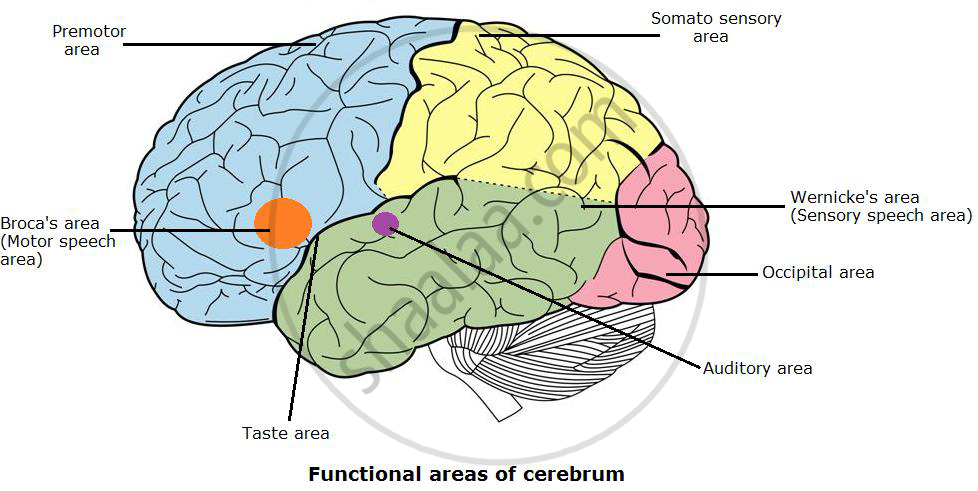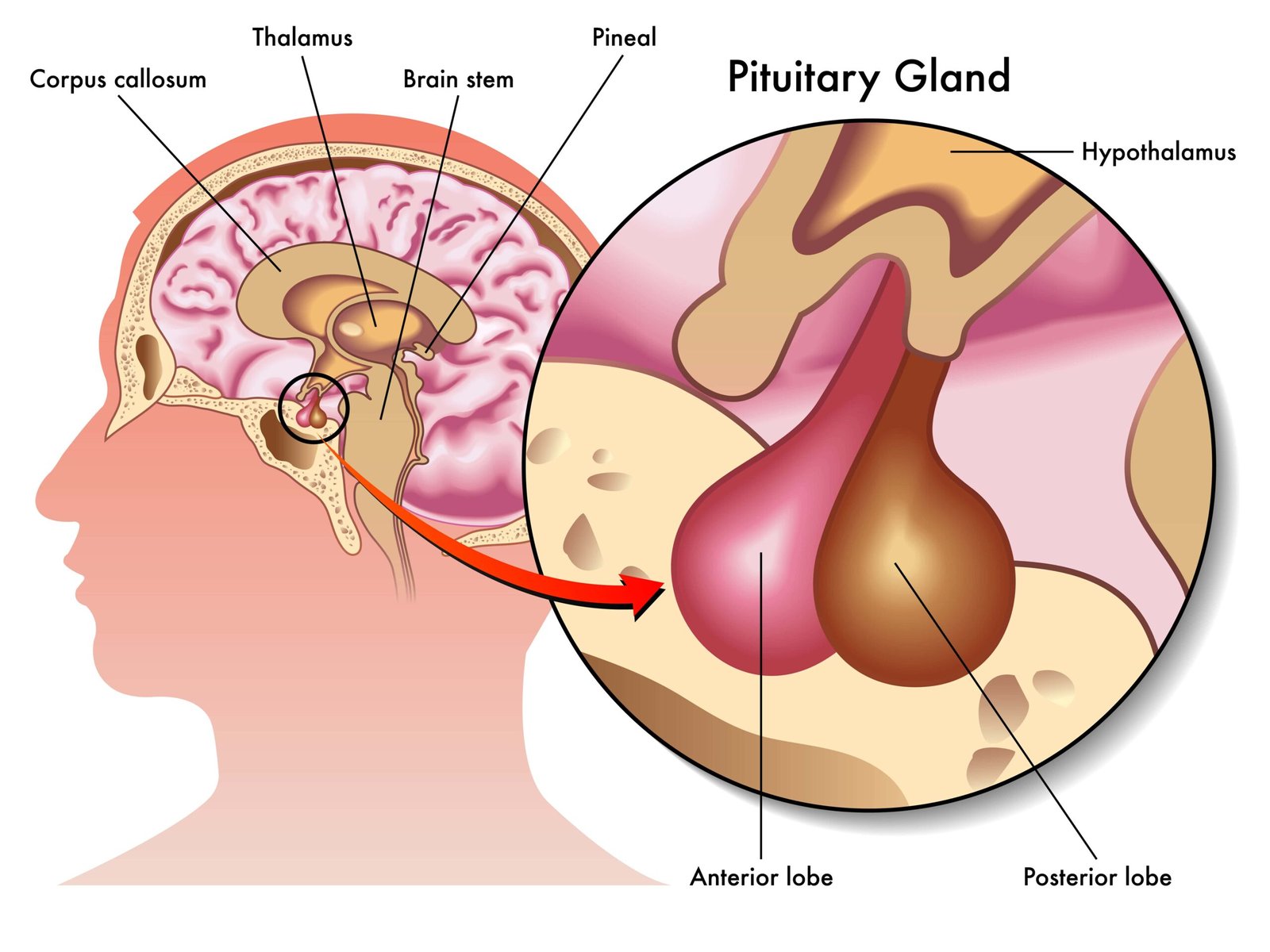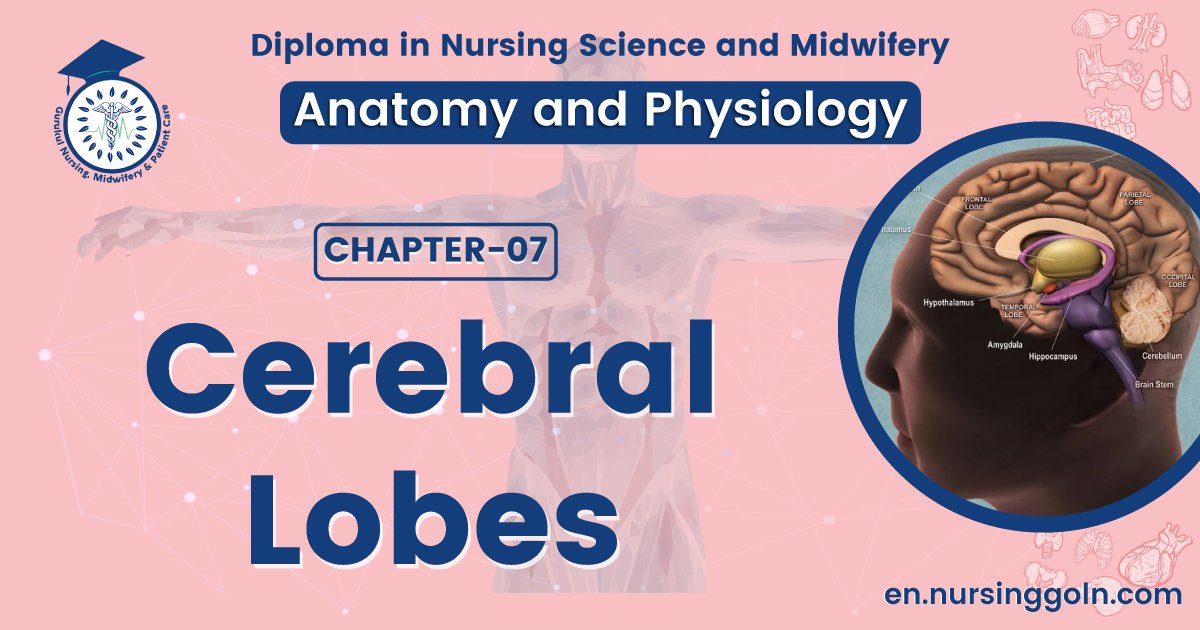Cerebral lobes-The course is designed for the basic understanding of anatomical structures and physiological functions of human body, musculoskeletal system, digestive system, respiratory system; cardiovascular system; urinary system, endocrine system, reproductive system, nervous system, hematologic system, sensory organs, integumentary system, and immune system.The aim of the course is to acquire knowledge and skills regarding anatomy and physiology.

Cerebral lobes
Functions of the cerebral lobes are:
| Lobe | Functions |
| Frontal | Voluntary motor control of skeletal muscles, personality, higher intellectual processes (eg, concentration, planning, and decision making), verbal communication |
| Parietal | Somatesthetic interpretation (e. g., cutaneous and muscular sensations), understanding speech and formulating words to express thoughts and emotions. |
| Temporal | interpretation of textures and shapes Interpretation of auditory sensations, storage (memory) of auditory and visual experiences |
| Occipital | Integration of movements in focusing the eye, correlation of visual images with previous visual experiences and other sensory stimuli, conscious perception of vision |
(Ref: Stuart Ira Fox, Human physiology 12th ed. P-208).
Thalamus, hypothalamus & Pineal Gland

Major regions of the diencephalon include the thalamus, hypothalamus, and pineal gland.
Thalamus
The thalamus is a part of diencephalon and consists ofpaired oval masses of gray matter organized into nucles with interspersed tracts of white matter
- The thalamus is the major relay station for most sensory impulses that reach the cerebral cortex from the spinal cord and brain stem
- The thalamus contributes to motor functions by transmitting information from the cerebellum and basal gangliato motor areas of the cerebral cortex
- The thalamus also relays nerve impulses between different areas of the cerebrum and plays a role in the maintenance of consciousness
Hypothalamus
The hypothalamus (hypo under) is the small portion ofthe diencephalon that lies below the thalamus and above thepituitary gland Although its sizeis small, the hypothalamus controls many important body activities, most of them related to homeostasis
The functions of the hypothalamus:
The chief functionsof the hypothalamus are as follows:
- Control of the ANS The hypothalamus controls and integrates activities of the autonomu nervous system, which regulates contraction of smooth and cardiac muscle and the secretions of many glands.
- Control of the pituitary gland and production of hormones. The hypothalamus controls the release of several hormones from the pituitary gland and thus serves as a primary connection between the nervous system and endocrine system.
- Regulation of emotional and behavioral patterns. Together with the limbic system (described shortly), the hypothalamus regulates feelings of rage, aggression, pain, and pleasure, and the behavioral patterns related to sexual arousal.
- Regulation of eating and drinking. The hypothalamus regulates eating behavior and also contains a thirstcenter.
- Control of body temperature. If the temperature of blood flowing through the hypothalamus is above normal, the hypothalamus directs the autonomic nervous system to stimulate activities that promote heat loss If, however, blood temperature is below normal, the hypothalamus generates impulses that promote heat production and retention.
- Regulation of circadian rhythms and states of consciousness. The hypothalamus establishes patterns of awakening and sleep that occur on a circadian (daily) schedule.

Pineal Gland
The pineal gland (pinecone-like) is about the size of a small pea and protrudes from the posterior midline of the third ventricle. Because the pineal gland secretes the hormone melatonin, it is part of the endocrine system. Melatonin promotes sleepiness and contributes to the setting of the body’s biological clock.
(Ref:-J. Tortora,8 edition, P-267-268+ Ross & Wilson 9th ed. P-153)
Read more:
